Creating interesting poses isn’t limited to those with posing tools. However, the game only offers a limited number of animations, which can make your shots feel repetitive over time.
In this guide I’ll go over all tools and options available to you as a vanilla Gposer.
Head & Face
Conveying attitude
The choices you make for your picture should be influenced by its subject and tone. Is the scene gentle, with the character looking at flowers? Or is it a high-stakes action scene where everything feels like it’s in motion? The way you pose your character depends on what you want to convey.
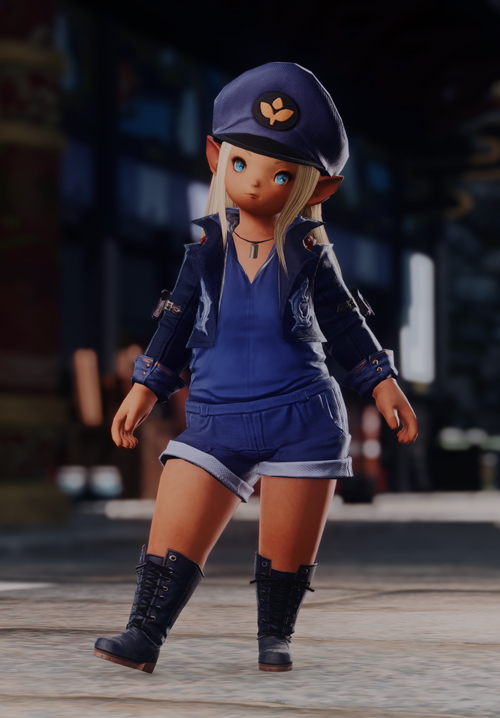
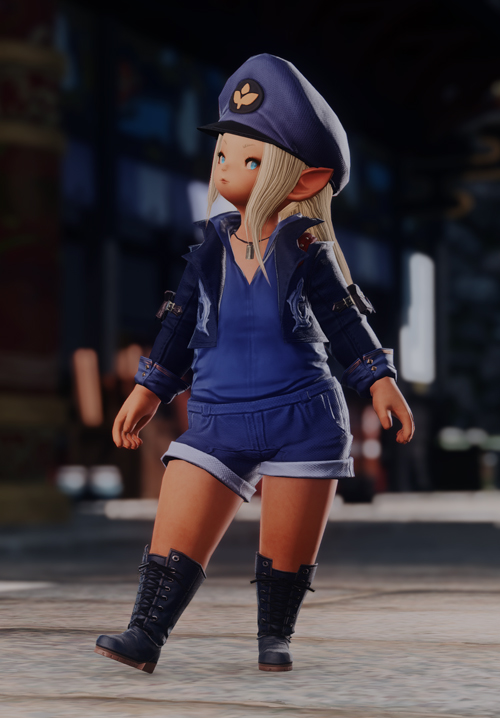
Attitude can—and should—be expressed through the entire body. Even a small change can influence the look and feel of the entire pose; a simple head tilt can turn a straightforward front-facing pose into one with far more personality. In this example, you can see how I achieved a lot more attitude by adjusting only the head and eyes of the character.
Head angles & eye tracking
To recreate the example above, two options are used. In the motion settings menu, you’ll find “Face Camera” and “Eye Tracking.”
Selecting Face Camera makes the character turn toward the camera’s current position. Selecting Eye Tracking makes the character’s eyes follow the camera as it moves.
By angling the camera upward, you can make the character look up when Face Camera is enabled. Then, with the head locked in place and Eye Tracking turned on, you can move the camera again to create a side-eye effect.
Lip movements
With what we’ve done so far, we’re already on track to create an interesting facial expression. To make even better use of the face’s potential, we’ll look at Lip Movements.
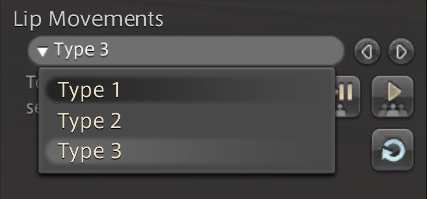
In the drop-down menu, you’ll find three types of lip movement. The difference between them lies in how quickly the lips move and how much additional head animation is applied.
Type 1
Type 2
Type 3
Facial expressions
It almost goes without saying that adding facial expressions has the biggest impact on—well—the facial expression.
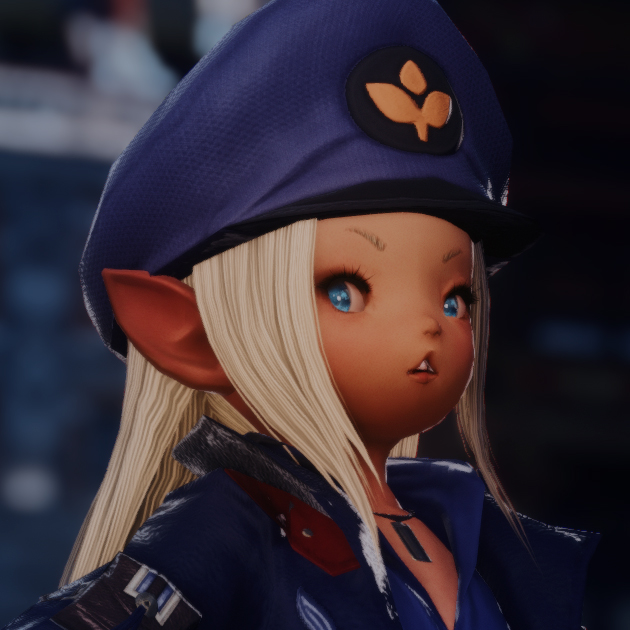
Ponder
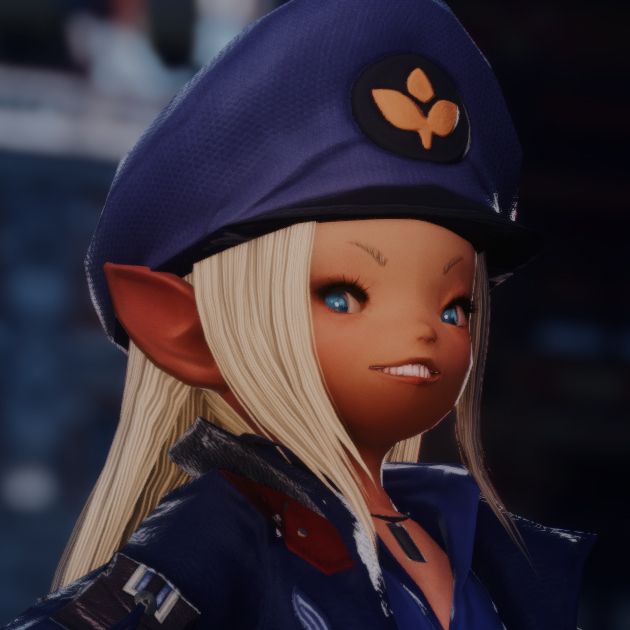
Sneer

Worried
Even while the character’s mouth is moving, you can still apply facial emotes. They may not translate as perfectly as they would on a static face, but that’s what makes the combination so much more interesting.
That said, not every facial emote works with lip movements. Some expressions will override them entirely.
Obstruction of the face
A pose might appear fine at first glance, but ask yourself, does it do a good job at showcasing what you want people to see? To make an image easier to read our needs need a point of interest. This will be covered more in depth in an actual composition guide, but I’ll quickly address the posing aspect of it here.
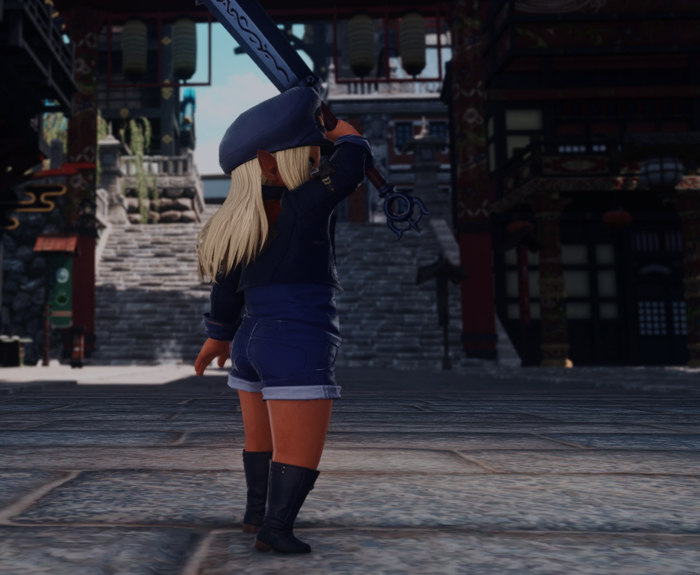
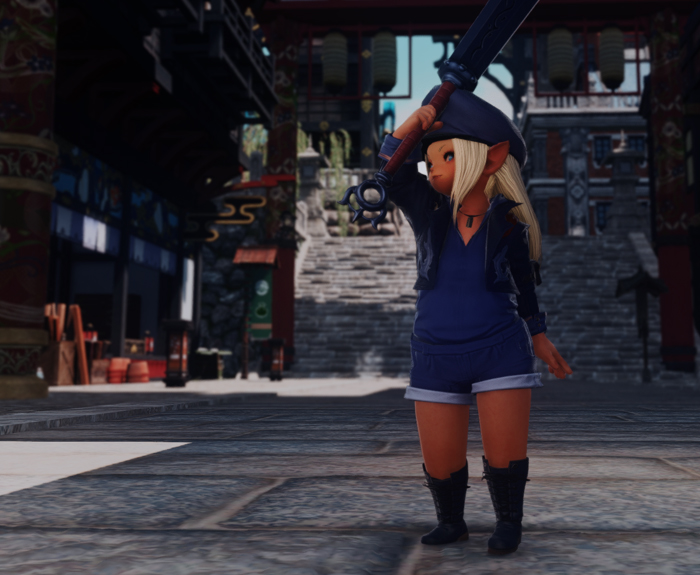
The image on the left is hard to read. You don’t really have anything to latch onto with your eyes as the character’s face is mostly hidden by the character’s arm. It could have been an interesting pose with a glance over the shoulders, but do to the Lalafell’s physique that quickly turned into an obstructed view.
The image on the right is much easier to read. By revealing the face I’ve given the viewer something to look at. Additionally it adds a natural break point between the clothes which are all a similar shade of blue. This contrast also makes the image easier to read.
This all said, you’re allowed to hide the face in certain situations. My general rule of thumb is that if I break a “rule” I have to do it in an intentional way. Again, the face doesn’t have to be visible, but it has to be clear that this was my intent. We can create drama by hiding parts of the character, would can result in enticing scenes.
Examples of hiding the face correctly
Move your body!
We’ve already made some pretty big steps in changing our character’s demeanor by only changing the head and facial expression. It’s time to move on to the rest of the body which is just as, if not most important.
Movement submenu
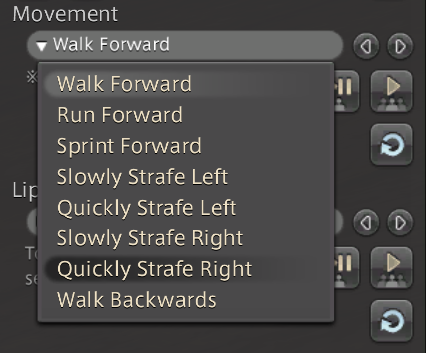
Backing up a little in the Gpose menu we’re going to have a look at the “Movements” drop down. This drop down contains all types of walking animations.
It’s an easily overlooked option as, it’s just walking animations right? Well, think again!
I’ve always found my biggest issue in posing my character than there’s such a huge limit when posing a specific class. Using the battle stance and victory pose emotes gets you a long way, but when you’re on your 50th screenshot of said class it starts to get a bit repetitive.
Luckily every class also comes with unique walking and running animations if you hold their weapon out. Thanks to this we’re able to add a whole repertoire of unique animations to our collection.

A pose created with the walking animations
Emotes
Without a doubt emotes will make the biggest difference to your character’s pose. Before I get into how to get the most out of emotes I would like to recommend you get into the habit of collecting.
By collecting emotes, even the ones you don’t quite like as much, you open yourself up to a lot more variety. Though you might not like the animation as a whole, there’s always the potential that one still frame from it makes for a beautiful and unique pose. Here you will be able to find a resource will all available emotes and where to get them.
Now that we’ve got that out of the way, let’s start navigating using emotes more efficiently.
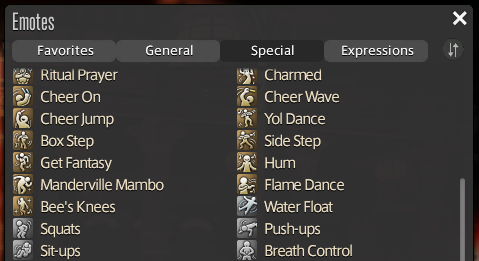
Slowing down animations
3rd party tool users like myself might already be familiar with the ability to slow down animations. It’s an amazing advantage to have when trying to choose more precisely what frame you’d like to pause on.
Luckily this isn’t entirely exclusive to PC players and there’s a way for us to do this using just the in game tools. So, how do we do this?
First we’re going to open up the second tab in Gpose, “Effect/Frame Settings”. Here you will find the status drop down menu. In this menu we’ll select sleep and apply it with either of the play buttons below.
You’ll immediately see everything is slowed down. However you run into the issue of those pesky sleep bubbles. You can remove these by click the “Toggle Battle Effects ON/OFF” button in the top menu.
Secondly, you might have issues with the expression. You can combat this by using a facial expression emote before or after applying the sleep status.
I’ll be honest and say that this trick is rather finicky. It will help you in some cases and work against you in others. It’s sadly not fool proof in that it also doesn’t work for every type of animation, as you may find that battle animations aren’t affected.
Regardless, it might be useful to you even to just get a closer look at the animation’s potential.
Moving frame to frame
Another option for getting a more precise result out of your chose animation is to skip between frames quickly. I’d say this option comes with less downsides too.
What I’m doing here is I’m quickly enabling and disabling motion using the shortkeys I have set for the disable all motion/target motion buttons. You’ll find these buttons in the top menu in Gpose, however we’re going to avoid actually clicking these buttons physically.
You can find which keys these buttons are bound to in the control guide Gpose provides. Hovering the buttons themselves will always show them bound to 1 or 2 which isn’t always the case.
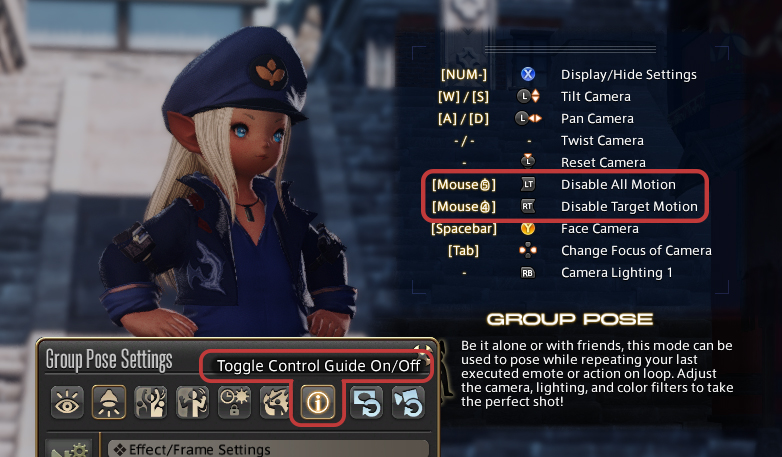
Using cutscenes
This section isn’t something you’ll need an elaborate explanation for as it’s really just more of a reminder. Posing your character within Gpose is the default, but you’ll find many good poses can be found in the game’s cutscenes. All you have to do to access these is enter an inn, open up the unending journey and pick a cutscene.
Finding the right cutscene can take a while, so you might want to consider noting down cutscenes you liked as you progress through the story!
